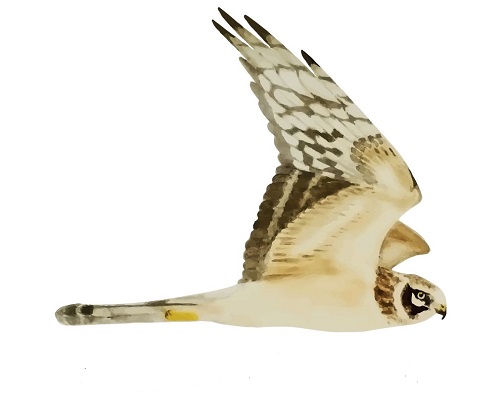Her på Skagen Fuglestations blog bringes korte nyheder i dagbogsformat om hændelser på fuglestationen.
Colourful morning
After a day full of first year whitethroats (tornsanger) today we had a little bit more colour in our ringing. We opened the nets at the usual time, half an hour before sunrise and had a very busy first net check (which is unusual). Part of the reason for this was probably very young birds taking their flying exercises in the early morning – or so it seemed, because we caught two blackbirds (solsort) that could barely fly and this yellowhammer (gulspurv) which has probably only just jumped out of the nest.

The day continued with some more unusual birds, showing that the breeding season is getting to an end and birds are starting to move around more. This stonechat still in its juvenile plumage probably fledged around two weeks ago somewhere south of here and had to leave the territory of the parents so it came up north to visit us. It was apparently only the second one caught in Skagen.

We also caught an adult male Linnet (tornirisk) brought some colour to our nets.

For the rest we still had a lot of juvenile whitethroats and chiffchaffs (gransanger) showing that the breeding success seems to have been pretty good. Also we had the first juvenile wren (gærdesmutte) and the regulars like baby blue and great tit (blåmejse og musvit) and blackbirds (solsort). Pil came out early to visit us at the ringing which was a good choice because that way she got to see a lot of birds.
While we were ringing, we suddenly heard the message from Rolf on Zello about a Zitting Cisticola (cistussanger!). It is hard to believe that a non-migratory bird that lives in the Mediterranean region would end up in Skagen but we could hear it again afterwards and by the evening there was a recording of the call as proof.
Trine, a veterinary from Aalborg Zoo and Aalborg University came to visit us during the day. She was very interested in the work we are doing and we hope to maybe collaborate with her in the future on some projects.
Back at the lighthouse we had a ringing tour with so many people it was split up according to languages (Danish and German). Everybody seemed to be very interested in our work and luckily they also got to see a single icterine warbler (gulbug) being ringed.
In the office part of the day we had a nice surprise from Belgium: a bird that we had caught on April 4th with a Belgium ring on was finally reported back to us: it was a dunnock (jernspruv) which was ringed at the end of October in Belgium as a first year bird.
Ringmærkning (Kabeltromlen and Lighthouse Garden):
Munk – Blackcap – 2
Rørsanger – Reed Warbler – 4
Gærdesanger – Lesser Whitethroat – 3
Blåmejse – Blue Tit – 2
Lille Gråsisken – Redpoll – 2
Musvit – Great Tit -4
Gulbug – Icterine Warbler – 2
Gransanger – Chiffchaff - 5
Tornsanger – Common Whitethroat – 10
Kærsanger – Marsh Warbler – 1
Solsort – Blackbird – 1
Gærdesmutte – Wren – 1
Tornirisk – Linnet – 1
Sortstrubet Bynkefugl – Stonechat – 1
Karmindompap – Rosefinch – 1
Rørspurv – Reed Bunting – 1
Gulspruv – Yellowhammer – 1
Total: 42
Folk: Martina Hillbrand, Simon S. Christiansen, Amandine Doré, Rasmus, Pil, Falke, Sally, Erik Christopherson, Rolf Christensen, Jørgen Kabel, Trine Hammer Jensen, and Igor
Klik her for at se dagens observationer indtastet i Dofbasen af observatører i området



